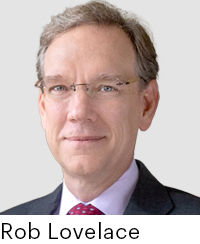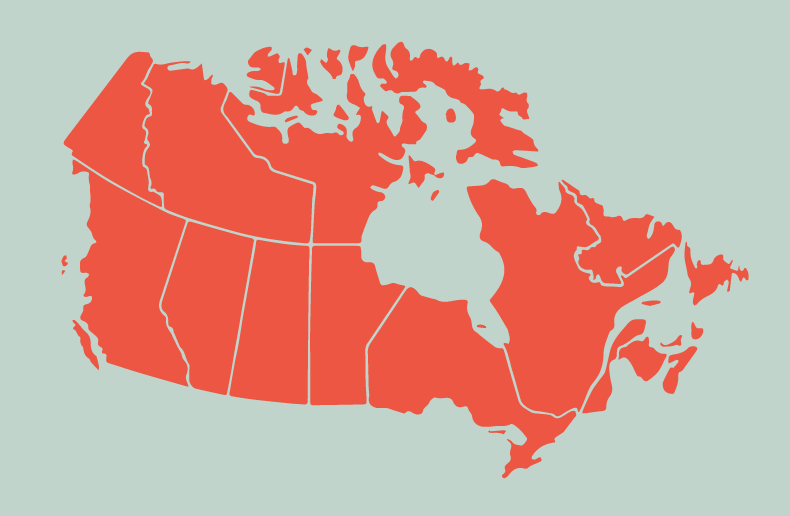So far, the financial markets have been tumultuous in 2022. When the U.S. inflation rate hit a 40-year high of 7.5 per cent in January, the Federal Reserve hinted that it would raise its key interest rates in March.
In Canada, inflation surpassed 5.1 per cent in January 2022, according to the Bank of Canada's Total Consumer Price Index (Total CPI), the highest increase since September 1991. By comparison the total CPI inflation rate was 1.0 per cent in January 2021.
In a bulletin issued on January 19, 2022, National Bank Financial Markets (NBFM) predicted five interest rate hikes in Canada in 2022. The first one is slated for March, NBFM says. The Bank of Canada's key interest rate at that time was 0.25 per cent.
Confidence crumbling
“The Omicron variant and inflation have undermined consumer confidence. This situation reflects the physical and psychological challenges the population has endured over the past two years due to the pandemic,” Cimon Plante, Senior Wealth Advisor and Portfolio Manager at Plante Group, a division of National Bank Financial, said in a recent commentary on the market turmoil.
“Not surprisingly, investor confidence has suffered the same fate,” Plante adds. He gave the example of the State Street Investor Confidence Index, which sank from 100.8 in January 2021 to 89.3 in January 2022.

Interim Chief Economist and Portfolio Manager at iA Financial Group Sebastien McMahon looked back at market volatility in response to rising inflation. In his weekly market overview, at the close on February 10, 2022 he noted that the yield on long-term bonds (FTSE TMX Long Index) has declined by nearly 10 per cent since the beginning of 2022.
The broader bond index (FTSE TMX Universe) has slipped by 4.75 per cent year-to-date, as has the U.S. S&P500 stock index. The S&P/TSX Canadian Equity Index edged upward 1.62 per cent during this period. In the U.S., the NASDAQ, a technology-based index, lost 8.74 per cent.
Staying the course
McMahon urges investors to take a step back. He points out that bond yields tend to fall when interest rates are rising. With more exposure to a bond index such as the FTSE TMX Universe, a conservative fund will underperform a more aggressive fund such as the S&P/TSX Canadian Equity Index.
“I've met with several clients and advisors in the last few weeks, and I'm often asked why conservative funds are doing worse so far this year. I tell them that our diversified funds are taking risk management steps, and avoiding aggressive positions for now,” he says.
Investors must look at a long-term investment horizon, McMahon continues. “When you have short-term volatility, a conservative fund will not protect you every month. Over the longer term, a conservative fund will have a more moderate return than an aggressive fund, but its average volatility will be lower,” he explains.
Mid-cycle uncertainty

Michael White is also unfazed by volatile economic indicators. The Portfolio Manager, Multi-Asset Strategies at Picton Mahoney told Insurance Portal that markets are currently going through a typical mid-cycle downturn. “That would not come as a surprise to many, given the pace of economic activity achieved off the brief (but deep) recession caused by the initial onset of COVID-19,” he says.
Halfway through a cycle, stocks usually transition from cyclical to more defensive themes. That is what is happening now, White says. He points out that defensive themes are vulnerable because of their sensitivity to rising interest rates. “Right now, when one looks under the hood of markets, there is a great deal of ‘churn’ in themes and leadership, which is typical of a mid-cycle slowdown,” he explains.
All the same, this is not just another mid-cycle, he says. Recent months have witnessed “relatively high levels of inflation, supply chain issues, pent-up demand and relatively full employment.”
Techno fears and opportunities
In his commentary on the market turmoil, Cimon Plante notes that the market has been in risk-off mode since fall 2021. This movement has galvanized the sale of stocks related to growth sectors, as investors take refuge in conservative stocks until the storm passes.
“Our portfolio performance has been affected, given our vision of investing in companies of the future. In fact, in January 2022, cash allocations to the technology sector reached a low point dating back to 2008. Right now, the tech sector is persona non grata,” Plante says.
Even so, Cimon Plante expects the market to emerge from its slump, which will boost returns in growth sectors. He also foresees good investment opportunities emerging from the current turmoil. He gives the example of the software and Internet sector. “Currently, they are trading close to their historical averages, and their business models are more promising than in the past,” Plante says.
The dividend privilege
At an economic forum hosted by BMO Global Asset Management's Exchange Traded Funds (ETFs) division in January 2022 industry expert Chris Heakes spoke about his preferred themes. The vice-president and portfolio manager of BMO's global structured investments mentions that dividend and value strategies tend to outperform in a rising rate environment.
Companies have begun to step up their dividends, Heakes adds. He predicts that dividend growth and return of capital will accelerate in 2022.
A member of the same panel, Jimmy Karam reviewed the advantages of this type of investment. The Director of ETF Trading at BMO Capital Markets pointed out that the tax treatment of preferred dividends is more advantageous than that of interest paid on bonds because preferred dividends are taxed as capital gains rather than income.
Company profits

Rob Lovelace, Vice Chair and President, and Portfolio Manager of the Canadian Focus Equity Fund, recently told Insurance Portal that he believes in companies’ ability to deliver profits. He adopts a three-part framework: pandemic, economy and markets.
“The pandemic is going to be with us for a while, but it will have a diminishing impact on the economy over time. The health of the economy matters a lot to the bond market, but less so to the equity markets. The stock market is driven by corporate earnings, and many companies have done well even during the COVID period. So, we should see the pandemic having less impact on the economy, the economy continuing to expand and companies well-positioned to thrive,” he says.
After the COVID correction in the first quarter of 2020, Rob Lovelace observed that stocks have not only rebounded, but have continued the extension of what is proving to be a decade-long bull market. US tech stocks in the FAANGs (Facebook (now Meta), Amazon, Apple, Netflix and Google (now Alphabet)) have led that extension, he believes, along with Microsoft and Tesla. “That long-term trend is still in place. COVID interrupted the climb, but it didn’t change the fundamental direction of the markets,” he says.
Deflationary trends
Sébastien McMahon endorses the Bank of Canada’s decision to raise interest rates in a measured and steady manner rather than an accelerated pace. iA's Chief Economist shared Bank of Canada Governor Tiff Macklem’s recent comments that rapid rate hikes may not be the panacea against some inflationary pressures, including supply problems.
In Canada, McMahon looks at a basic scenario of four interest rate hikes in 2022, and probably four more hikes in 2023. He thinks everything can change from one week to the next. The economist calls 2022 a year of great uncertainty. To navigate uncertainty, he says, you need active management. He advises investors who have too much risk in their portfolios to talk to their advisors.
Gasoline and auto prices still accounted for nearly half of the 7.5 percent annual inflation rate in the US in January 2022, McMahon continues. These factors should become disinflationary starting in the spring, he says. He foresees a fairly rapid decline in the US inflation rate starting in April or May, levelling off at about 3 percent by the end of the year, he says, citing the central bank's forecast.
Alternative investments
Michael White believes that markets have apparently adjusted to the announcement of interest rate hikes. He notes, however, that if the messaging on tightening financial conditions changes, or if inflation becomes more “sticky” than “transitory,” this could upset markets. “The inflation debate and the path of interest rates and tighter financial conditions will govern markets beyond 2022,” he says.
“In uncertain times, the greatest opportunity is to diversify,” White continues. He believes that an alternative portfolio constructed to be less dependent on interest rates can be a good alternative to the typically rate-sensitive balanced fund. He also endorses alternatives that can garner returns from inflation themes rather than attempting to avoid rate risk.
“Often, it is only when the unintended consequences of a habit-formed portfolio begin to show themselves that investors contemplate a future that looks different from the past and that their portfolio may not be well-positioned for what that future may hold,” White explains.
Diversification may well be the watchword, but it implies far more than merely owning all sectors of the stock market. “Alternatives should be sought that offer a clear diversification benefit to a traditional portfolio. In the years ahead, the conversation will focus a lot more on the quality of returns, rather than just the quantity of returns,” White stresses.
GDP dragged by COVID-19
Jimmy Jean, Chief Economist at Desjardins, thinks the pandemic will have an impact on gross domestic product around the world. Speaking at the digital event on 2022 Economic Forecasting and Financial Markets organized by the Cercle finance du Québec, Jean explained that the virus will continue to mutate and spread until a super vaccine is developed.
Among the consequences of the pandemic, one third of U.S. employers expect their employees to work in hybrid mode. The labour market and purchasing preferences will transform for the long run. “We are likely to see changes in what jobs workers want to do, changes in consumer preferences, and changes in entrepreneurs’ choices related to starting a business or deciding whether or not to keep their business alive,” Jean says.
The pandemic could also have an economic impact: Businesses that are on the wrong side of new consumer and worker preferences may be forced to close, he points out.
Even so, Jimmy Jean remains optimistic. “We are very concerned about the delayed effects of the pandemic. But there are also positives. The Omicron wave could be our first-class ticket to the end of the pandemic and to herd immunity.”
He nonetheless revised his real GDP growth forecast downward because he is factoring in upcoming waves of COVID-19. “Who knows what surprises the pandemic environment has in store? We have to build it into our baseline scenarios,” Jean says.




